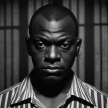The Tapestry of Humanity: Exploring the Intersections of Art and Culture
Art and culture are the lifeblood of humanity, a testament to our capacity for creativity, expression, and connection. Throughout history, art has served as a mirror reflecting the complexities of society, the depths of human emotion, and the boundless imagination of the human mind. Culture, in its myriad forms, shapes and is shaped by this artistic endeavor, creating a dynamic interplay that enriches our understanding of the world and ourselves. This exploration delves into the vibrant intersections of art and culture, shedding light on their profound impact on society and the individual.

Art as a Reflection of Society
Art does not exist in a vacuum; it is deeply intertwined with the social, political, and economic contexts of its time. From the cave paintings of Lascaux to the digital art of the 21st century, art has chronicled the human experience, capturing the zeitgeist of each era. The Renaissance, with its emphasis on humanism, saw art as a celebration of the human form and intellect, a stark contrast to the divine focus of the Medieval period. Similarly, the Dada movement of the early 20th century, with its absurdity and irreverence, was a direct response to the horrors of World War I, challenging traditional notions of art and society.
Culture: The Soil from Which Art Grows
Culture encompasses the customs, beliefs, and practices of a society, serving as the fertile ground from which art emerges. It is through cultural expressions—language, rituals, music, and art—that communities articulate their identity, values, and aspirations. The vibrant colors and intricate patterns of Indigenous Australian art, for example, are not only aesthetically pleasing but also convey stories, spiritual beliefs, and connections to the land. Similarly, the Harlem Renaissance was not merely an artistic movement but a cultural awakening, asserting the intellectual and cultural achievements of African Americans.
Art as a Catalyst for Cultural Exchange and Understanding
Art possesses the unique ability to transcend linguistic and cultural barriers, fostering dialogue and understanding among diverse communities. The Silk Road, a network of trade routes connecting the East and West, was also a conduit for cultural exchange, where artistic influences mingled and flourished. Today, international art exhibitions and festivals continue this tradition, showcasing the diversity of human creativity and fostering a global appreciation for cultural nuances.
The Role of Technology in Shaping Art and Culture
The advent of technology has revolutionized the creation and consumption of art, expanding the boundaries of what is possible. Digital art, virtual reality installations, and AI-generated music are pushing the frontiers of creativity, challenging our perceptions of artistry and authorship. Social media platforms have democratized artistic expression, allowing anyone with a smartphone to share their creations with a global audience. This digital landscape has also facilitated cultural diffusion, enabling people to engage with art and cultural expressions from around the world.
Preserving Art and Culture in a Changing World
As societies evolve, the preservation of art and cultural heritage becomes increasingly vital. Museums, galleries, and cultural institutions play a crucial role in safeguarding the artifacts and traditions of the past, providing a bridge to understanding historical contexts and informing future generations. Initiatives like UNESCO's World Heritage Sites also underscore the global commitment to preserving the rich tapestry of human culture and history.
Art and Culture as Agents of Social Change
Art has the power to provoke thought, evoke emotion, and inspire action, making it a potent tool for social change. Street art, for example, has emerged as a form of social and political commentary, transforming public spaces into canvases for expression and dissent. Similarly, theater and film can highlight social issues, challenge stereotypes, and foster empathy, contributing to societal shifts in perception and policy.
The Personal and Collective Journey Through Art and Culture
Engaging with art and culture is both a personal journey of discovery and a collective experience of shared humanity. It challenges us to see the world through different lenses, to question, to feel, and to connect. Whether through the brushstrokes of a painting, the melody of a song, or the steps of a dance, art and culture are invitations to explore the depth and diversity of human experience.
Conclusion: Weaving the Future of Art and Culture
The intersections of art and culture are dynamic and ever-evolving, reflecting the continuous flux of human societies. As we navigate the challenges and opportunities of the 21st century, art and culture remain essential for understanding our world and imagining our future. By embracing the diversity of artistic and cultural expressions, we can enrich our lives and foster a more inclusive, empathetic, and vibrant world. The tapestry of humanity, woven from threads of art and culture, is a testament to our shared creativity and resilience—a canvas on which we can all contribute, one brushstroke at a time.






Comments
There are no comments for this story
Be the first to respond and start the conversation.